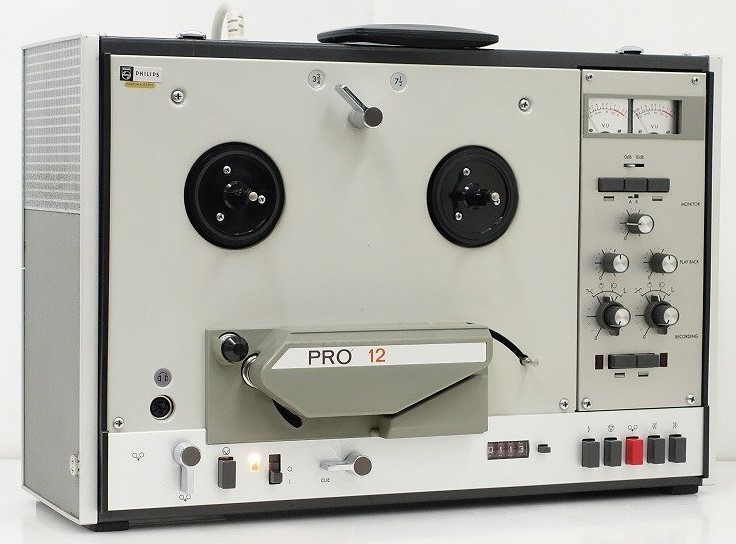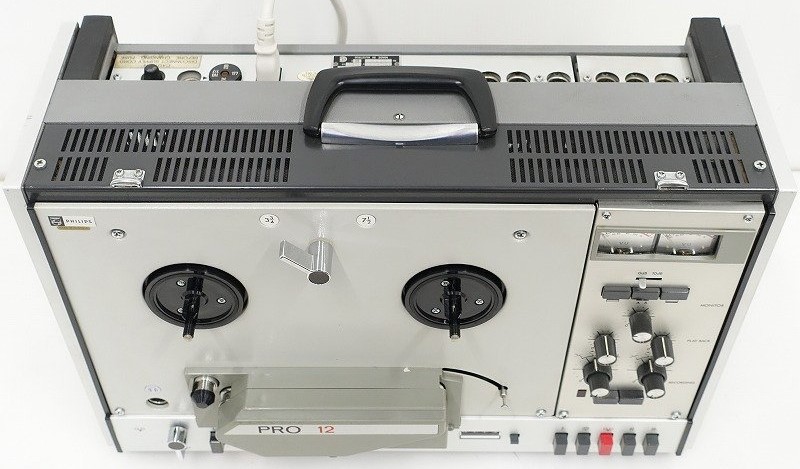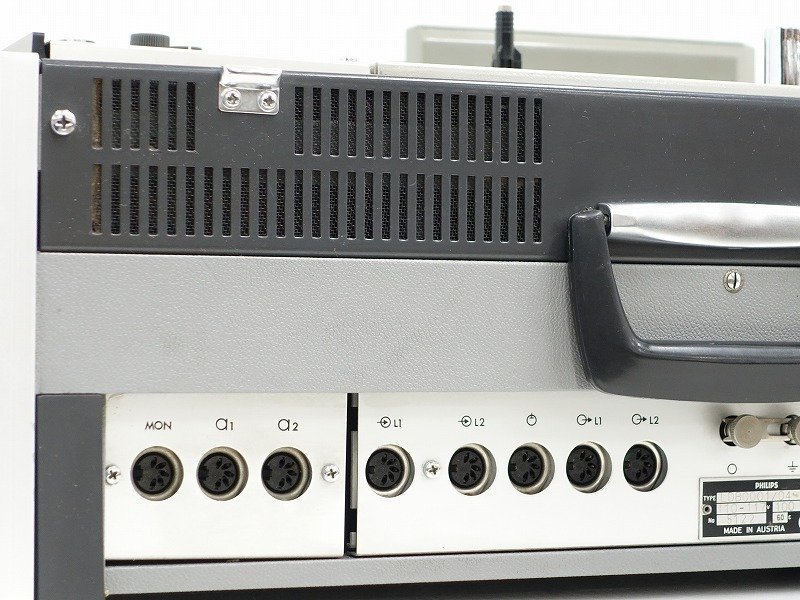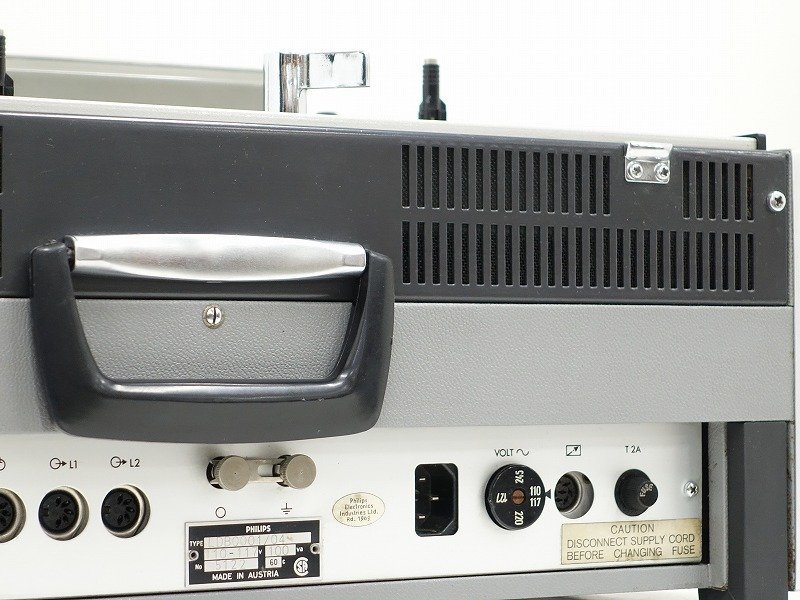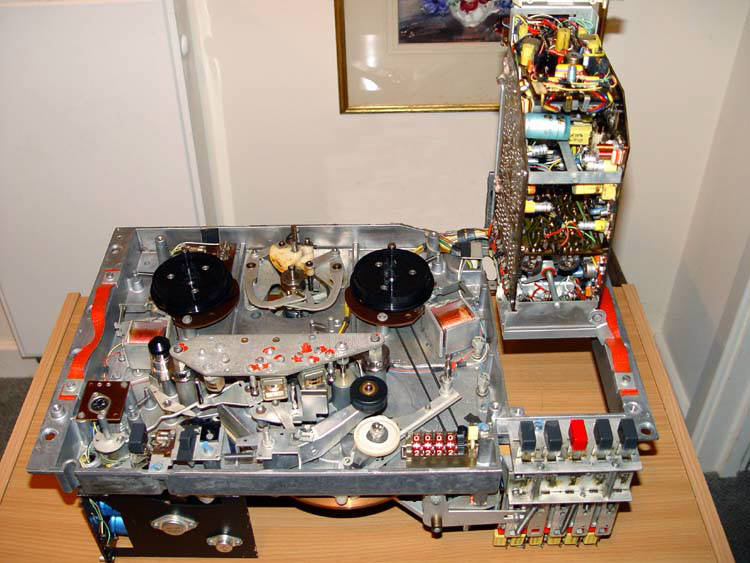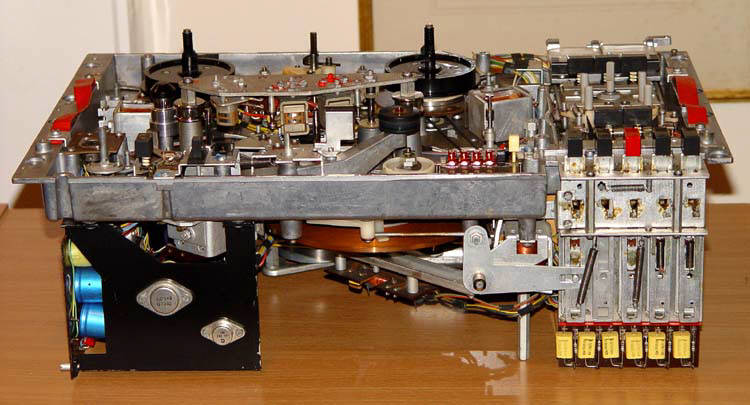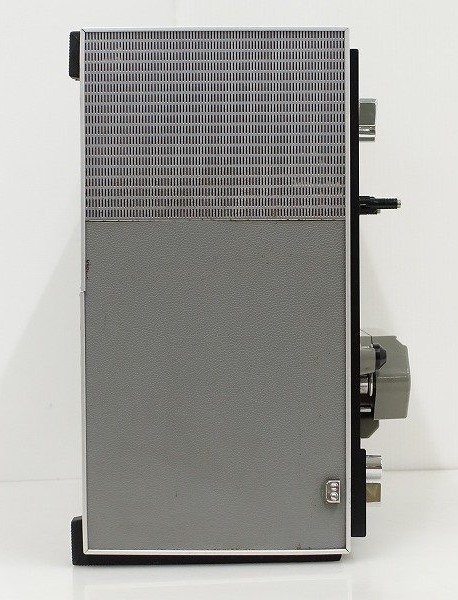Technical Details
Brand: Philips
Model:Pro 12
Category:Super High Fidelity
Application:Consumer
Electronics:Solid State
Equalization:IEC
Country of Manufacture:Netherlands
Release dates:1973 - 1973
Tracks:1/4 Rec/PB
Speeds: 3 3/4, 7 1/2
Max Reel Size("): 7"
Number of heads: 3
Dimension: 520 x 240 x 340 mm - 20.5 x 9.4 x 13.4 inch
Head Composition: Permalloy
Head Configuration: Stereo
# Motors: 3
Auto Reverse?:No
Voltage(s): 110-120v, 220-240v
Frequency Response:40Hz - 15kHz 7½ ips
Wow and Flutter:0.1% at 7½ ips, 0.13% at 3¾ ips
Signal-to-Noise Ratio:56 dB
Sound quality rating:8 / 10
Long-term reliability rating: 8/ 10
Weight: 23 kg. - 50.5 Lbs.
Additional Details
Description
Having made studio tape recorders since the early 1950s, Philips would introduce their last lineup of professional tape recorders in the late 1960s which included the Pro 12, Pro 20, Pro 36 and Pro 51.
The Philips Pro 12 was made from 1969 – 1971. A three motor, three head quarter-track, half-track (optional) stereo tape recorder with optional pilot head. With a maximum reel size of 7″ and two speeds, two speeds, 3¾ and 7½ ips, it hardly fit the studio profile of the day but cost 1/3 of the next model up, so call it the junior workhorse of the studio. It’s really solidly built, unlike the Philips consumer line from 69.
Here’s what the 1969 Tape Recording Yearbook had to say about it:
“… A general-purpose, utility professional machine using separate record and playback heads and amplifiers allowing after-record monitoring, echo effects and sound-with-sound multiplay. Ferroxcube record and playback heads a four digit tape position counter and could be used vertically or horizontally.
A one-piece molded aluminum frame which has two straps at both sides of the frame to lift out of the recorder for service. The PCB’s are all easily accessible so repairs can be made easily.
The tape path uses a circular guide roller with ball-bearing on the left and on the right side a rigid one.
Large AC winding motors with a capstan motor that looks similar to the Philips N4407
Service Summary/Repair report Philips PRO 12
Additional Info
Starting time: 1 second / Signal to noise ratio: 56dB at 7½ ips, 52dB at 3¾ ips,(unweighted measurements) / Crosstalk: -52 dB (at 1 kHz to 3 third-harmonic distortion, full level on adjacent track, both tracks biased) / Total harmonic distortion: less than 3% at third harmonic(+6 dB at full modulation: 0.5% (record amplifier). 0.5% (replay amplifier). / Inputs: line: 100mV 1Mohm, microphone: 0.2mV 2Kohms, diode: 2 – 40mV (adjustable) 20 Kohms, optional inputs microphone with transformer 0.2mV 50 – 200 – 500 ohms (taps), line: 100mV 10 Kohms / Outputs: monitor: 0.775v at 10Kohms or with transformer 0dBm, peak 6dBm / Dimensions: 20.5 x 13.75 x 9.4″ (520 x 340 x 239 mm) / Weight: 50.6 lbs (23 kg) / Quarter-track – half-track stereo version available


